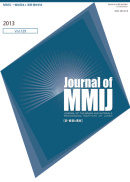特集号
129 巻, 7 号
資源と素材
選択された号の論文の18件中1~18を表示しています
- |<
- <
- 1
- >
- >|
岩盤工学特集
総説
-
2013 年 129 巻 7 号 p. 409-417
発行日: 2013/07/01
公開日: 2014/10/21
PDF形式でダウンロード (3154K)
論文
-
2013 年 129 巻 7 号 p. 418-424
発行日: 2013/07/01
公開日: 2014/10/21
PDF形式でダウンロード (2207K) -
2013 年 129 巻 7 号 p. 425-432
発行日: 2013/07/01
公開日: 2014/10/21
PDF形式でダウンロード (3611K) -
2013 年 129 巻 7 号 p. 433-439
発行日: 2013/07/01
公開日: 2014/10/21
PDF形式でダウンロード (2863K) -
2013 年 129 巻 7 号 p. 440-446
発行日: 2013/07/01
公開日: 2014/10/21
PDF形式でダウンロード (1401K) -
2013 年 129 巻 7 号 p. 447-454
発行日: 2013/07/01
公開日: 2014/10/21
PDF形式でダウンロード (4738K) -
2013 年 129 巻 7 号 p. 455-460
発行日: 2013/07/01
公開日: 2014/10/21
PDF形式でダウンロード (3382K) -
2013 年 129 巻 7 号 p. 461-466
発行日: 2013/07/01
公開日: 2014/10/21
PDF形式でダウンロード (1959K) -
2013 年 129 巻 7 号 p. 467-471
発行日: 2013/07/01
公開日: 2014/10/21
PDF形式でダウンロード (1642K) -
2013 年 129 巻 7 号 p. 472-478
発行日: 2013/07/01
公開日: 2014/10/21
PDF形式でダウンロード (2548K) -
2013 年 129 巻 7 号 p. 479-484
発行日: 2013/07/01
公開日: 2014/10/21
PDF形式でダウンロード (1722K) -
2013 年 129 巻 7 号 p. 485-491
発行日: 2013/07/01
公開日: 2014/10/21
PDF形式でダウンロード (1808K) -
2013 年 129 巻 7 号 p. 492-498
発行日: 2013/07/01
公開日: 2014/10/21
PDF形式でダウンロード (1637K) -
2013 年 129 巻 7 号 p. 499-505
発行日: 2013/07/01
公開日: 2014/10/21
PDF形式でダウンロード (5822K) -
2013 年 129 巻 7 号 p. 506-512
発行日: 2013/07/01
公開日: 2014/10/21
PDF形式でダウンロード (3567K) -
2013 年 129 巻 7 号 p. 513-519
発行日: 2013/07/01
公開日: 2014/10/21
PDF形式でダウンロード (2669K) -
2013 年 129 巻 7 号 p. 520-528
発行日: 2013/07/01
公開日: 2014/10/21
PDF形式でダウンロード (4659K) -
2013 年 129 巻 7 号 p. 529-537
発行日: 2013/07/01
公開日: 2014/10/21
PDF形式でダウンロード (2773K)
- |<
- <
- 1
- >
- >|
